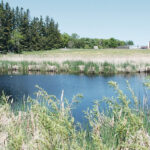The recent neonics nod has left farmers pleasantly surprised and environmental groups deeply disappointed. The agricultural industry waited with some trepidation this spring for a ruling by Health Canada on use of neonicotinoid insecticides, which are used to control various production-limiting crop pests. Three years ago the Pest Management Regulatory Agency made a preliminary decision […] Read more
Tag Archives WP editorial

Canadian gene editing rule deserves farmer support
While it might be arriving at seeding time, it might also be worth having some say. Canada’s proposed rules for gene-edited crops are up for discussion for the next month or so and, so far, things are looking good for a science-based outcome, one that is compatible with other major exporters including the United States. […] Read more

Agricultural processing finds new life on Prairies
Climate change and Chinese trade: are there two more controversial elements on farmers’ minds right now? Some producers would happily ignore both given that changes to either one won’t be coming through the farmgate anytime soon. After all, China is not this country’s biggest market and there is record crop movement to ports. Whether or […] Read more
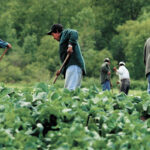
Foreign workers part of our agricultural landscape
In Canada, we rely on relationships with workers from other countries to keep our nation running. In agriculture, they represent 50,000 to 60,000 of our annual workforce. Ensuring they are safe and welcome ensures our access to a domestic food supply. There is a role for government here to ensure Canadian farms are as safe […] Read more
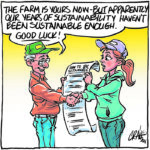
Sustainability is crucial for prairie farm survival
Sustainability — it’s a word you have heard more often in the past decade. Within the last two years a mention can be found several times in every edition of this publication. But what is sustainability? It’s farming, Prairies-style. As a capital-intensive business with inconsistent returns and oft-needed recapitalization, prairie farming is almost exclusively a […] Read more

Call to protect wild pigs a careless disregard for ag
Wild pigs are a threat to people and the environment. This species, when not under the supervision of a farmer, has no business in the Canadian landscape. Yet self-defined environmentalists feel the need to protect these damaging creatures that threaten the prairie environment and can potentially affect a sustainable human food supply. A petition with […] Read more
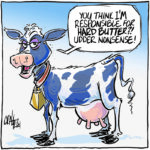
Spread the word — facts not all in yet on butter
Is butter really harder than it used to be? Some think it is. But what if harder butter is like other versions of the truth? You know, like the ones we learned in the past four years in the United States political scene. Some folks down there have successfully claimed secondary truths are just as […] Read more

Prairies need better voice on Vancouver port board
Canada’s international ports are highly regulated spaces and, in this country, they are only partially accountable monopolies. The Port of Vancouver is one example. Legal monopolies must be accountable to those they affect. Without market forces to apply pressure or firm regulations to ensure performance, there is significant danger that they will not be as […] Read more
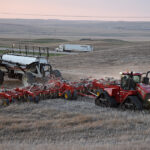
Start date crucial part of fair carbon payments
Storing carbon in farmland isn’t quite as straightforward as it might seem. Paying farmers properly for doing it is even more complex. That’s what governments appear to believe but before any payment plan is formed, we need agreed ground rules about western Canadian soil. Depending on who is asked, 15 to 20 percent of all […] Read more

Cattlemen’s group name worthy of a conversation
Last week members of the Saskatchewan Cattlemen’s Association decided not to instruct their board to pursue a name change that might have resulted in gender neutrality. It is a surprising development that the organization might want to rethink. Yes, in today’s society there is an often wearying sensitivity to political correctness but acknowledgement that both […] Read more



